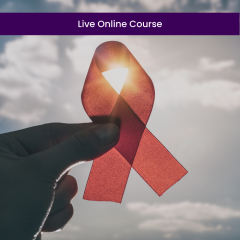Blushing and the Development of Social Anxiety Disorder (1 CE)
This course is for: Clinical Psychologists, Counselors, and Marriage & Family Therapists
Course By: Ken Springer, Ph.D. and Kristin Ceppaluni, LMHC
Content By: Nikolíc, M., Majdandžíc, M., Colonessi, C., de Vente, W., Möller, E., & Bögels, S. (2020). The unique contribution of blushing to the development of social anxiety disorder symptoms: Results from a longitudinal study. Journal of Child Psychology and Psychiatry, 61(12), 1339-1348.
https://doi.org/10.1111/jcpp.13221
Course Description: Recent theories propose that heightened self-conscious emotional reactivity contributes to the development of social anxiety disorder (SAD). Blushing is a physiological marker of self-conscious emotional reactivity as well as a core symptom of SAD, but studies have not examined whether blushing contributes to the development of SAD. The present study addressed this question by means of longitudinal data gathered from children in a laboratory setting at 2.5, 4.5, and 7.5 years of age. The researchers found that greater behavioral inhibition (BI) at 2.5 and 4.5 years predicted greater social anxiety at 4.5 years and that the latter predicted SAD symptoms at 7.5 years. However, greater blushing at 4.5 years independently contributed to SAD symptoms at age 7.5. The findings indicate two pathways for the development of SAD, one in which early BI gives rise to social anxiety that in turn leads to SAD, and another in which SAD develops from the experience of blushing. These findings have clinical implications for early prevention and as well intervention efforts that target SAD.
Learning Objectives:
- Understand the rationale for the study as well as the longitudinal approach for gathering data from children at three-time points
- Describe the main findings of the study regarding the impact of blushing on the development of SAD symptoms
- Integrate the strengths and limitations of the study, and summarize the clinical implications for early SAD-related prevention and intervention efforts
Course Outline:
- Read and understand The unique contribution of blushing to the development of social anxiety disorder symptoms: Results from a longitudinal study
- Review the Course Description and Learning Objectives
- Understand the rationale for examining whether self-conscious emotional reactivity (expressed as blushing) contributes to the development of SAD
- Understand how BI, blushing, social anxiety, and SAD symptoms were measured at different ages
- Analyze the evidence that blushing makes a unique contribution to the development of SAD symptoms
- Integrate the study's key findings, strengths, limitations, and clinical implications
- Work through the post-test questions, using the article as the sole basis for your answers
- Revisit the article for any missed questions and/or to better understand the contribution of blushing to SAD symptoms
Approvals:
| Board Approvals | American Psychological Association (APA), NBCC, Florida Board - Social Work, MFT, Counseling, and Psychology, NYSED - Social Work, MFT and Counseling Only, American Academy of Health Care Providers in the Addictive Disorders |
|---|---|
| CE Format | Online, Text-Based |







